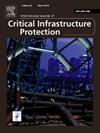Critical entities resilience strengthening tools to small-scale disasters
IF 5.3
3区 工程技术
Q1 COMPUTER SCIENCE, INFORMATION SYSTEMS
International Journal of Critical Infrastructure Protection
Pub Date : 2025-04-23
DOI:10.1016/j.ijcip.2025.100766
引用次数: 0
Abstract
The issue of critical infrastructure protection is still largely based on the concept of critical infrastructure resilience. However, it is already clear that this concept must be restructured, primarily due to the adoption of a new European Union directive that focuses on the resilience of critical entities that are owners or operators of individual critical infrastructures. This directive stipulates, among other things, an obligation for critical entities to provide unlimited services necessary for maintaining the most important functions of the state. For this reason, it is necessary to pay increased attention not only to strengthening the resilience of infrastructures, but also to the management processes of critical entities. Based on these facts, 161 tools suitable for strengthening the critical entities internal resilience against small-scale disasters are classified and defined in this article. These strengthening tools are defined for both entities and infrastructural resilience. The article further defines the environment and procedure for strengthening the critical entities internal resilience, thus expanding the application of the existing CERA method, which was originally designed for the purpose of assessing the critical entities resilience to small-scale disasters. The design part of the article also includes a presentation of an example of a practical application of the proposed procedure.
关键实体复原力加强工具,以小规模灾害
关键基础设施保护问题在很大程度上仍然基于关键基础设施弹性的概念。然而,很明显,这一概念必须重新构建,主要是由于采用了新的欧盟指令,该指令侧重于作为单个关键基础设施所有者或运营商的关键实体的弹性。该指令规定,除其他事项外,关键实体有义务提供维持国家最重要职能所需的无限服务。因此,有必要不仅更加注意加强基础设施的复原力,而且还要注意关键实体的管理过程。基于这些事实,本文对161种适用于增强关键实体内部抗灾能力的工具进行了分类和定义。这些加强工具是为实体和基础设施的复原力而定义的。本文进一步定义了加强关键实体内部复原力的环境和程序,从而扩大了现有CERA方法的应用范围,该方法最初是为评估关键实体对小规模灾害的复原力而设计的。文章的设计部分还包括对所提出程序的实际应用的一个示例的介绍。
本文章由计算机程序翻译,如有差异,请以英文原文为准。
求助全文
约1分钟内获得全文
求助全文
来源期刊

International Journal of Critical Infrastructure Protection
COMPUTER SCIENCE, INFORMATION SYSTEMS-ENGINEERING, MULTIDISCIPLINARY
CiteScore
8.90
自引率
5.60%
发文量
46
审稿时长
>12 weeks
期刊介绍:
The International Journal of Critical Infrastructure Protection (IJCIP) was launched in 2008, with the primary aim of publishing scholarly papers of the highest quality in all areas of critical infrastructure protection. Of particular interest are articles that weave science, technology, law and policy to craft sophisticated yet practical solutions for securing assets in the various critical infrastructure sectors. These critical infrastructure sectors include: information technology, telecommunications, energy, banking and finance, transportation systems, chemicals, critical manufacturing, agriculture and food, defense industrial base, public health and health care, national monuments and icons, drinking water and water treatment systems, commercial facilities, dams, emergency services, nuclear reactors, materials and waste, postal and shipping, and government facilities. Protecting and ensuring the continuity of operation of critical infrastructure assets are vital to national security, public health and safety, economic vitality, and societal wellbeing.
The scope of the journal includes, but is not limited to:
1. Analysis of security challenges that are unique or common to the various infrastructure sectors.
2. Identification of core security principles and techniques that can be applied to critical infrastructure protection.
3. Elucidation of the dependencies and interdependencies existing between infrastructure sectors and techniques for mitigating the devastating effects of cascading failures.
4. Creation of sophisticated, yet practical, solutions, for critical infrastructure protection that involve mathematical, scientific and engineering techniques, economic and social science methods, and/or legal and public policy constructs.
 求助内容:
求助内容: 应助结果提醒方式:
应助结果提醒方式:


